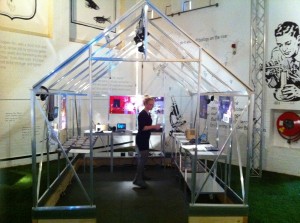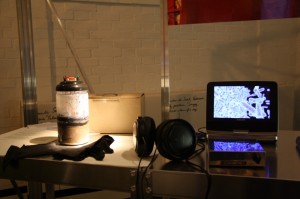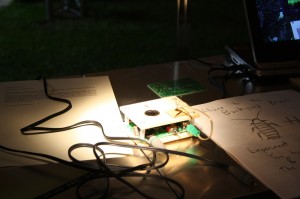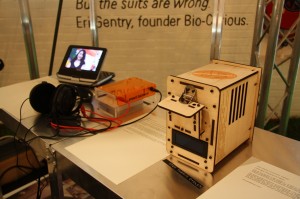A while back, we mentioned the excitement of sending an OpenPCR off to the Presidential Commission on Bioethics. After all that hard work, you might think our prototype would come home for some R&R. Instead, it headed onto Amsterdam, the Netherlands, where it was featured in an art show in Enschede by the Joris Laarman Lab, along with lots of other cool experimental devices. Congrats to the Lab, and Anita and Nora for their hard work. Here’s a few shots from the exhibit. Enjoy!
Monthly Archives: December 2010
OpenPCR in the NYTimes
OpenPCR was featured in the New York Times today, in an article on “Home Labs on the Rise for the Fun of Science” (link)
Not everyone is content to fill their labs with centuries-old technology. Samara Rubenstein, the manager of the Sackler Educational Laboratory for Comparative Genomics and Human Origins at the American Museum of Natural History, said home scientists could extract their DNA by rinsing their mouth with salt water, breaking apart the sloughed-off cheek cells with dish detergent, and then rinsing out the DNA with rubbing alcohol. “It’s really cool,” she said.
Other experiments for home labs can be found at Ology, a corner of the museum’s Web site.
After the DNA is extracted, more options are becoming available for identifying the organism using a technique known as PCR, or polymerase chain reaction. A new project, OpenPCR, is designing new home tools for DNA analysis. Tito Jankowski, who founded the project with Josh Perfetto, said the kit would give anyone the chance to analyze DNA.
Mr. Jankowski said one possible experiment for home scientists would be to test for their reactions to certain food. Only some people, for instance, taste the bitterness in brussels sprouts, a trait that has been linked to a part of our genome that the kit can identify.
Eri Gentry, an entrepreneur in San Francisco, said she had already tested herself for this gene, using a $200 kit from Carolina Biological Supply, which sells to school science labs.
“Some of these things you do not because it’s the quickest way to do it, but because you learn a lot,” she said.




